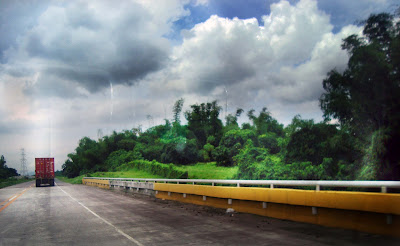Dr Abe V Rotor
Professor in Photography, UST
Faculty of Arts and Letters
Living with Nature School on Blog
Paaralang Bayan sa Himpapawid with Ms Melly C Tenporio
738 DZRB-AM Band. 8 to 9 evening class, Monday to Friday
1.
Halo effect enhances religious ambiance of the stone icons atop UST's
main building in modified silhouette through selective photo editing,
without erasing the colonial features of the building. Photo by Miss
Alyssa Beltran.
2. Chandelier, stained glass and lantern. Without tripod this night
scene can be captured with high resolution camera, within the range of 5
to 8 megapixels. Editing is needed to enhance contrast and colors.
3. Combining field photo and still life of the same subject gives a complete picture of the specimen - rambutan.
The composite photo shows botanical characteristics of the fruiting
tree and morphological features of the fruit showing the rind and edible
pulp. This technique is recommended for technical photography. AVR

4. Macro and micro photography. Stone covered with green algae (lumot); microcopic structure of Lyngbya crosbyanum, a common green freshwater alga, magnified 50x under the Low Power Objective (LPO) of a compound microcope. AVR
5.
The enduring beauty of Black & White photography will stay in
spite of the breakthrough in digital photography and wireless
technology. The tunnel effect towards the source of light gives the
needed hope for these children in war-torn Europe during the second
World War. (Time-Life)
7. Skyscape is classified as landscape. The rainbow is perhaps the most photographed skyscape, followed by the many figures created by clouds. These views were photographed on the highway in Batangas at around five o'clock in the afternoon on September 21, 2012, which happens to be Autumnal Equinox.
6.
Nature is perhaps the most popular application of photography,
surpassing human portraits and events. Here the details of shy
creatures like the land snail, (African snail), and hatchlings
soft-shelled turtle are revealed for biological study.
7. Skyscape is classified as landscape. The rainbow is perhaps the most photographed skyscape, followed by the many figures created by clouds. These views were photographed on the highway in Batangas at around five o'clock in the afternoon on September 21, 2012, which happens to be Autumnal Equinox.











No comments:
Post a Comment